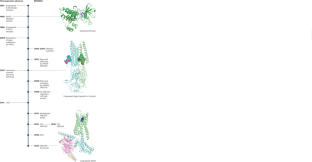Chemogenetics for cell-type-specific modulation of signalling and neuronal activity
IF 56
Q1 MULTIDISCIPLINARY SCIENCES
引用次数: 0
Abstract
Chemogenetics is an approach for engineering proteins to enable their modulation by otherwise inert small molecules. Although kinases, enzymes and ion channels have been used for chemogenetics, the most widely used platform is based on G protein-coupled receptors (GPCRs), using designer receptors exclusively activated by designer drugs (DREADDs). DREADDs have been used ubiquitously to modulate cellular signalling and neuronal activity and are a key technology for modern causal neuroscience. Here we provide a Primer on key aspects of DREADD technology, emphasizing how to reliably design and validate chemogenetic transducers and actuators. We also provide recommendations for the use of DREADDs for specialized applications including modulating metabolically essential peripheral tissues and distinct neuronal populations in non-human primates. Chemogenetics is a technique for modulating engineered proteins using small molecules. In this Primer, Kang et al. describe the key aspects of designing receptors and small molecules and their use in neuroscience applications.


细胞类型特异性调控信号和神经元活动的化学遗传学
化学遗传学是一种工程蛋白质的方法,使它们能够被其他惰性的小分子调节。虽然激酶、酶和离子通道已被用于化学遗传学,但最广泛使用的平台是基于G蛋白偶联受体(gpcr),使用由设计药物(DREADDs)激活的设计受体。DREADDs被广泛用于调节细胞信号和神经元活动,是现代因果神经科学的一项关键技术。在这里,我们提供了一个关于DREADD技术的关键方面的入门,强调如何可靠地设计和验证化学发生换能器和执行器。我们还提供了一些建议,包括在非人类灵长类动物中调节代谢必需的外周组织和不同的神经元群体。
本文章由计算机程序翻译,如有差异,请以英文原文为准。
求助全文
约1分钟内获得全文
求助全文

 求助内容:
求助内容: 应助结果提醒方式:
应助结果提醒方式:


